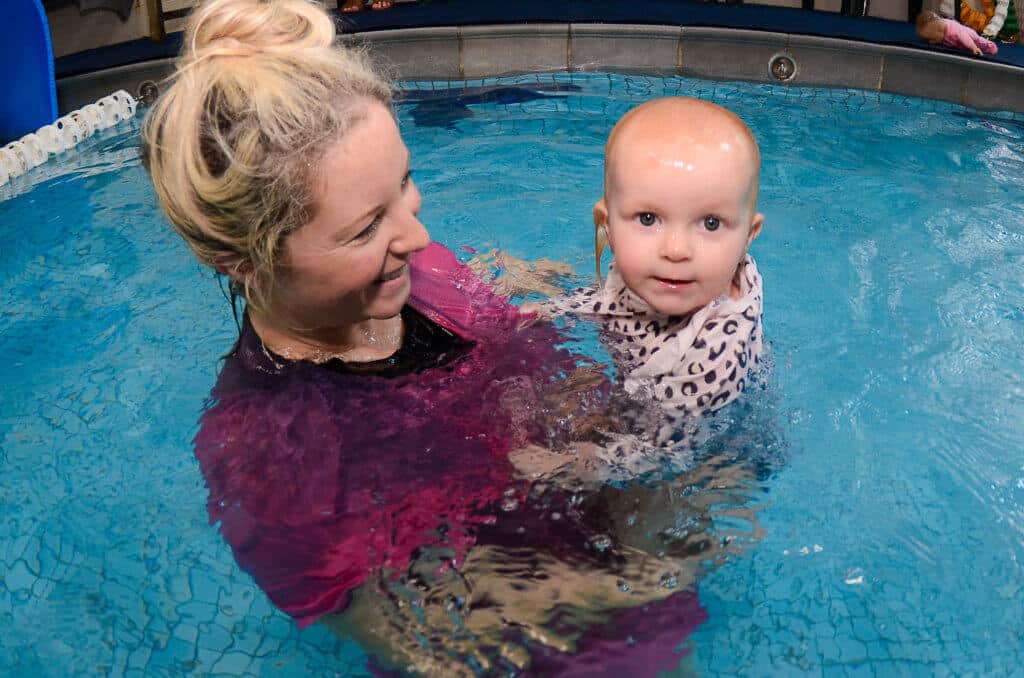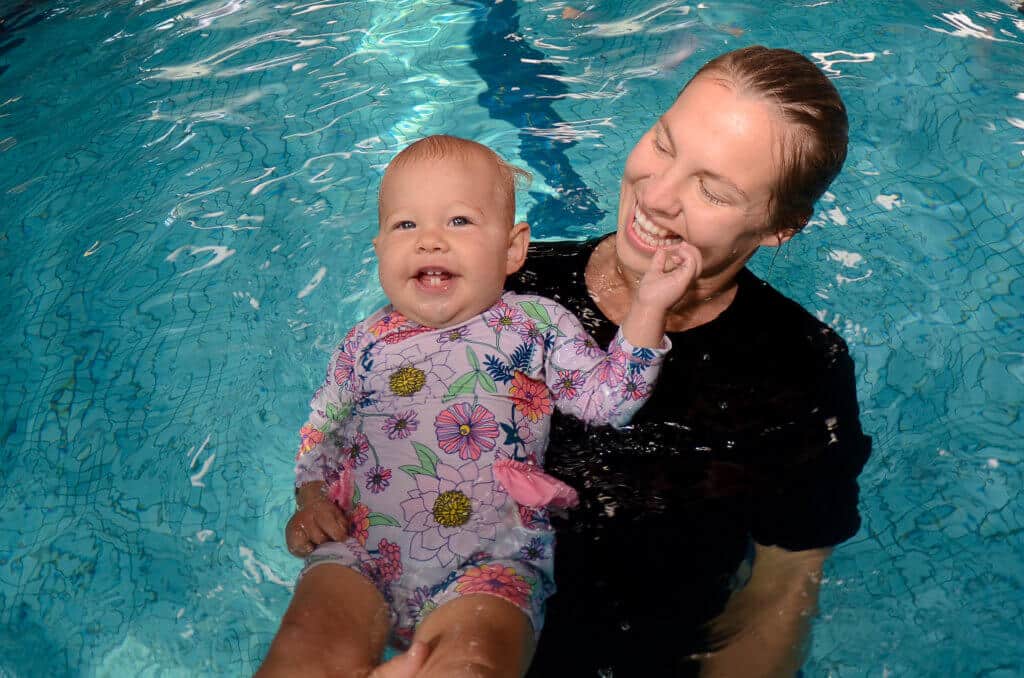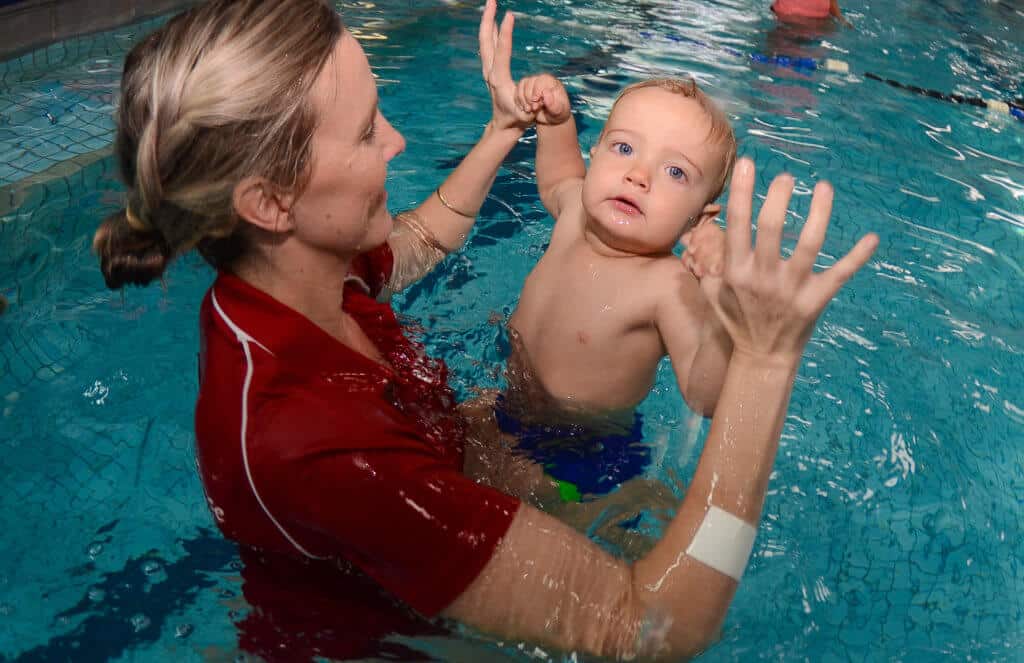Learning how to swim should be a positive experience, for both parent, and child. Swim Schools should adopt policies that revolve around teaching positive learning techniques. No child should be subjected to a fearful or intimidating environment, when learning how to swim. Aggressively forcing children into swimming activities, such as back floating, while they are crying, and in distress, is totally inappropriate. Here, we discuss how to ease crying during a swimming lesson.
Crying during the swimming lesson can be very worrying and stressful for parents. In fact, it can even turn parents off swimming altogether. Babies and young children can cry for a variety of different reasons, and Swim Schools must give parents positive strategies to cope in these situations. Swim Schools should reassure parents that if they persevere in a loving caring environment, and learn to respond to their child’s cues, the child will be swimming happily and confidently very soon. Providing water safety, and a calm environment, for children will help immensely.

How Babies Communicate Through Crying
Babies communicate their needs, and problems, through crying. In some instances, babies become tired, hungry, or cold during the swimming lesson. The astute parent will soon learn to recognise the different types of communicative cries given by their baby, and will know how to ease crying during a swimming lesson. Once parents recognise what is upsetting their baby, it is easier to rectify the problem.
Swim Schools should encourage parents to:
- Choose an appropriate time to swim, e.g. not during nap time or feeding time
- Arrive early, before the lesson starts, to ensure that there is a calm and relaxed setting. A rushed parent can become a stressed parent
- Try to relax, because babies read their parent’s body language, therefore, if the parent is nervous, or stressed, the baby will be too
- Hold the baby softly, and let them feel buoyancy. Once baby experiences floating they become more relaxed in the water

Soothing a Crying Toddler
As children grow with age, they begin to form their own opinions, ideas and fears. Very often, toddlers develop a fear of the water, particularly if they haven’t had early exposure to the water. Toddlers can also be very emotional little people, and sometimes they may not be in the mood to participate. If Swim Schools have scared or uncooperative toddlers, it is important that parents be encouraged not to force or hurry them along. Forcing, or hurrying the children, will only make it more difficult the next time the parent brings them to the pool. Swim Schools do not want to get into situations where children are distressed, before they even enter the learning to swim environment.
Swim Schools should encourage parents to:
- Arrive early so that toddlers can watch other children enjoying swimming lessons
- Give children adequate warm-up time to help them relax, ideally in shallow water, where they are in control
- Set small realistic goals for their child
- Use positives praise to encourage desired behaviors
- Use parental demonstrations to help children relax

Help Crying Children to Settle
At Laurie Lawrence Swim School we are lucky enough to have access to shallow water or specifically designed teaching ledges. These ledges are the perfect spot for a frightened or scared child to relax and be in control. Very often children become scared or upset when they are not in control. Parents are encouraged to use these shallow water environments to give their child space to calm down and then play little games to help them relax and re-engage them into the lesson. If children become upset during the lesson, it can be disruptive to the entire class. If parents are well versed with positive strategies and know what to do if their child becomes upset, it is much better for the entire group dynamics.
It is important that parents understand the importance of settling their child in the pool. We do not want to create a situation where the child thinks that if they cry they can avoid their lesson. We also do not want to end the lesson on a negative note. This will make it harder when the parent and child return the following week. Swim Schools should encourage parents not to feel embarrassed or uncomfortable if their child becomes upset during the lesson, they should remind parents that this is a natural behaviour and easy to overcome.
If you would like to know more about World Wide Swim School, sign up to our newsletter here.
Written by Laurie Lawrence.
